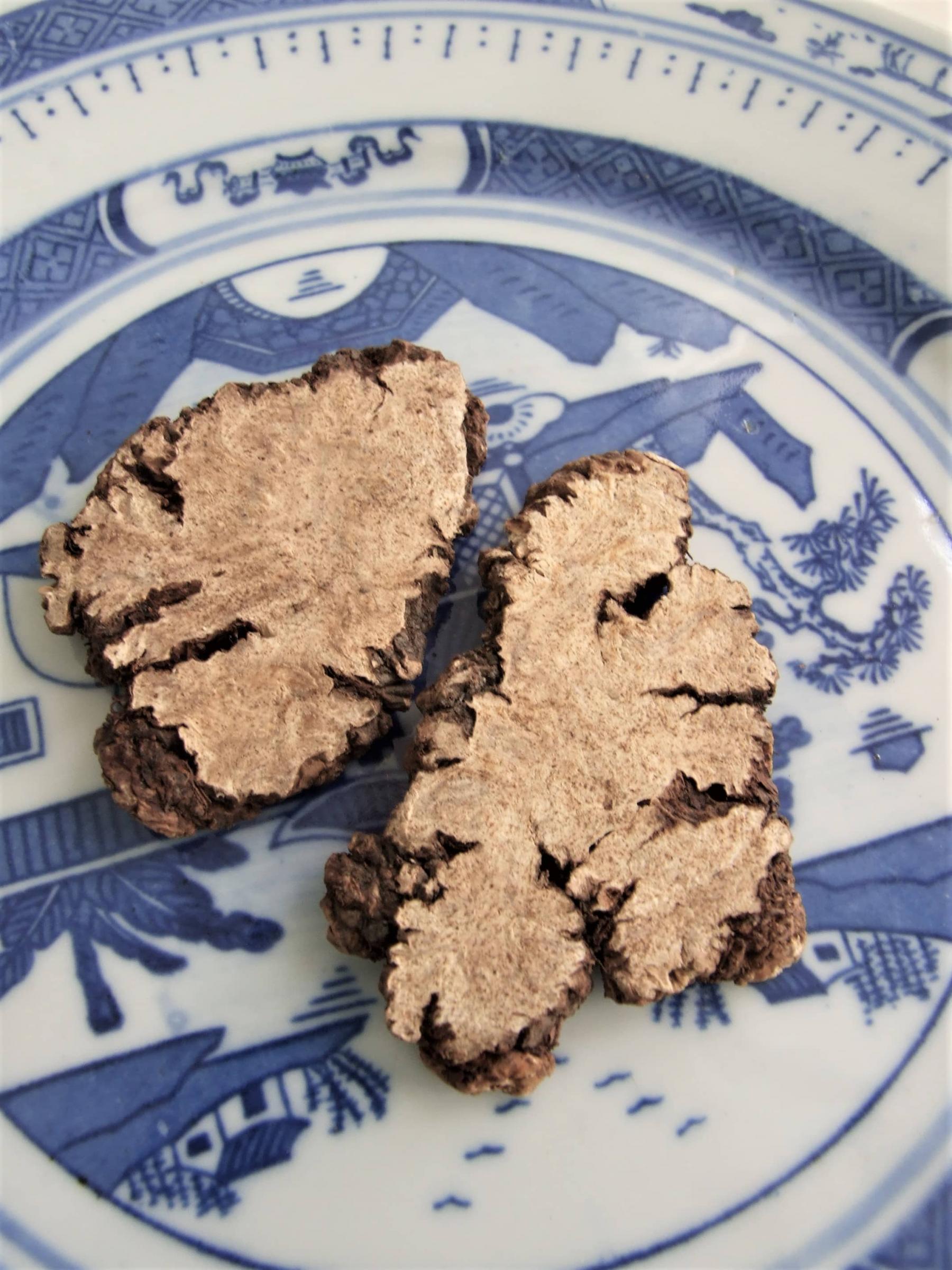Rhizoma Ligustici Chuanxiong
- Name
- Origin
- Where Does It Grow?
- Nature and Flavor
- Identified Active Components / Major Chemical Constituents
- Drug Actions in TCM
- Traditional Uses in TCM
- Pharmacological Actions
- Toxicology
- Administration and Dosage
- Adverse Effect, Side Effects and Cautions
- References
Name
Latin Name: Rhizoma Ligustici Chuanxiong
Common Name: Sichuan lovage rhizome
Scientific Name: Ligusticum chuanxiong Hort.
Chinese Name: 川芎
Pinyin Name: chuan xiong
Origin
The rhizome of Ligusticum chuanxiong Hort., a perennial herbal plant of the Umbelliferae / Apiaceae family.
Where Does It Grow?
Sichuan lovage is mainly produced in Sichuan province of China, other provinces like Jiangxi, Hubei and Xhaanxi also provide part of the supply. Nowadays, the herb is sourced from cultivation.
Nature and Flavor
The active components in Sichuan lovage rhizome include volatile oils, alkaloids and organic acids. The volatile oils are ligustilide, sabinene, limonene and senkyunolide A-S; the alkaloids are tetramethylpyrazine, perlolyrine, wallichilide, 3-butylidene-7-hydroxyphthalide, (3S)-3-butyl-4-hydroxyphthalide; the organic acids are ferulic acid, sedanonic acid, folic acid, vanillic acid, caffeic acid and protocatechuic acid, etc.
Identified Active Components / Major Chemical Constituents

Drug Actions in TCM
Sichuan lovage rhizome activates blood and qi (vital energy), expels wind pathogens and relieves pain.Traditional Uses in TCM
Sichuan lovage rhizome is commonly used for pain relief and promoting blood circulation
Pharmacological Actions
Ex vivo study
2. Neuroprotective effect
Animal study
3. Anti-platelet effect
In vitro study
4. Analgesia effect
Animal study
Toxicology
Sichuan lovage rhizome water extract was given to mice through intraperitoneal injection and muscular injection, the LD50 were 65.86g/kg and 66.42g/kg respectively. Sichuan lovage rhizome extract in 1.5/kg and 3g/kg were fed to rats for 21 days, then wait and see for 1 week, the animals were found blood-like substances around the nostrils, and also irritating and drooling.
Administration and Dosage
For decoction, Sichuan lovage rhizome is suggested in 3~10g.
Adverse Effect, Side Effects and Cautions
References
- 雷載權主編《中藥學》上海科學技術出版社,2000年6月.
- 趙中振,蕭培根主編《當代藥用植物典》香港賽馬會中藥研究院有限公司,2006年8月.
- 陶御風編著《臨証本草》人民衛生出版社,2005年5月.
- Chen J, Chen T, ed. Chinese Medical Herbology and Pharmacology, Art of Medicine Press, 2004.
- Liu Ganzhong, Xu Qiuping & Wang Tai (editor-in-chief), The Essentials of Traditional Chinese Herbal Medicine, Foreign Languages Press, Beijing, 2003.
- Gao Wei, et al. Protective effect of the pretreatment with Chuanxiong-phthalide A on the vascular endothelial cells impaired by the ischemia and reperfusion in isolated rats hearts. Zhongguo Zhong yao za zhi; 30(18): 1448-1451.
- Kao TK, et al. Neuroprotection by tetramethylpyrazine against ischemic brain injury in rats. Neurochem Int. 2006; 48: 166–176.
- Li M, et al. Inhibition of shear-induced platelet aggregation in rat by tetramethylpyrazine and salvianolic acid B. Clin Hemorheol Microcirc 2004; 31: 97-103.
- Peng C, et al. Pharmacodynamic action and mechanism of volatile oil from Rhizoma Ligustici Chuanxiong Hort. on treating headache. Phytomedicine. 2009; 16(1): 25-34.


